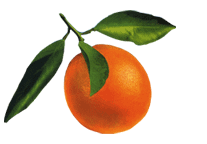21 Apr Flickr: Anatomy of a Long Photograph
A series of “still” images from Godfrey Reggio’s Koyaanisqatsi (Quicktime, 26 MB). Click to play.
Earlier this month flickr announced that short video clips could now be uploaded to the popular photo site. Some photo purists were skeptical, even spawning a huge “No Video on Flickr” group. After all, the sanctity of the best still images, rich in implied meaning, could be diluted by zillions 90 second video clips of someone’s keg party (and we already have other sites, like YouTube for that). Flickr said the ninety-second limit was to encourage “long photos.” There are contemporary videographers and filmmakers who have used video or film to create sublime still images: the best long photos. And one of my favorites is Godfrey Reggio.
I will never forget the first time I saw Koyaanisqatsi, Reggio’s 1983 film about contemporary “life out of balance.” I was mesmerized by his long drawn out shots. It gave me time to study the scene and, in part, that was the point: to stop moving and consider the consequences of going through life at an increasing interstellar speed. Sometimes there was lots of activity in the frame. But there were times when he pointed his camera at a scene that, on first glance, appeared to be a photograph. It was a still image with all the implications connected with still photography: observations of a slice of frozen time and a consideration of the photographer’s framing and associations within that frame.
Yet given the chance to observe closely there was movement. The characters in this “still” were breathing and blicking and moving. When I saw his scene of Las Vegas waitresses standing still but not still, I was blown away (the vernacular I used in the early 80s when I first saw the film). To this day it is my most favorite scene of any movie I have ever watched. I literally held my breath for its entire duration wondering how long it would go on. The intensity of that shot was immense. It forced me to really look. And that has always been my goal as a photographer: to make people observe what’s going on inside my images for as long as I can. That is the mark of a successful photograph. Not so easy in a culture heavy with daily sound and sight bites always vying for our attention and beckoning us to move quickly from one to another.
Life precariously balanced on a fulcrum. Las Vegas Waitresses is the best long photograph I have ever seen. I could watch those women stand still forever.




Beerzie Boy
Posted at 11:09h, 21 AprilAgreed: There is good video and bad video, just as there is good photography and bad photography.
Anyway, how is it that no one worries about the quality of Flickr being diluted by zillions of still photographs of someone’s keg party?
MattT
Posted at 14:44h, 21 AprilAn art professor in college recommended to the class we see Koyaanisqatsi some time, so I rented it. It blew me completely away. Now I know exactly what to use my recent birthday Amazon gift card for. Thanks!
Michael
Posted at 15:58h, 21 AprilI’m going to have to try doing that. While I know I’m not Reggio’s equal (heck, I thought that it was a Philip Glass movie), I still like the effect.
mattymatt
Posted at 16:26h, 21 AprilBless your heart, but I just can’t see what’s so compelling about the waitresses. To me it just looks like a bunch of people standing around… And that’s it.
Igor
Posted at 16:33h, 21 AprilLong photographs remind me of Warhol’s Screen Tests.
Jeff
Posted at 16:46h, 21 AprilFor other interesting examples of a long photographs take a look at the work of Gillian Wearing who won the Turner Prize in 1997.
Jesse Zander Corum
Posted at 18:17h, 21 AprilYour aspect ratio is off; it’s squeezing the image horizontally. I presume you took these off the MGM disc, which had a 1.78:1 anamorphic image (squeezed down to the 1.33 frame of a DVD) and meant to be stretched across a widescreen TV. It looks like it’s still squeezed.
This site has proper stills (including the waitresses) from the MGM disc, as well as stills from Reggio’s IRE DVD, which presents the film “open matte.” i.e. no cropping or squeezing, just a full 1.33 images as it was first shot on 35mm.
Jeff
Posted at 19:51h, 21 AprilJesse, interesting you should mention the film’s aspect ratio. I, too, thought it looked squeezed a bit (yes, I have the MGM version). The site you mentioned gave some interesting side-by-side comparisons.
On another note, I played with a mask to get rid of the black frame but thought the time I was spending getting it to look just right was delaying my posting the piece. So I put the clip up as is, without alteration. Obviously, the clip gives you an approximation of the original. Seeing those women stand there on the big screen was much more thrilling. But I think you get the gist of my premise.
Kris
Posted at 10:21h, 22 AprilThanks so much for sharing, this entry has truly made my day! How beautiful.
nick
Posted at 12:57h, 22 AprilJapanese director Takeshi Kitano uses this technique a lot in his films. I recommend you watch Hana Bi or Sonatine.